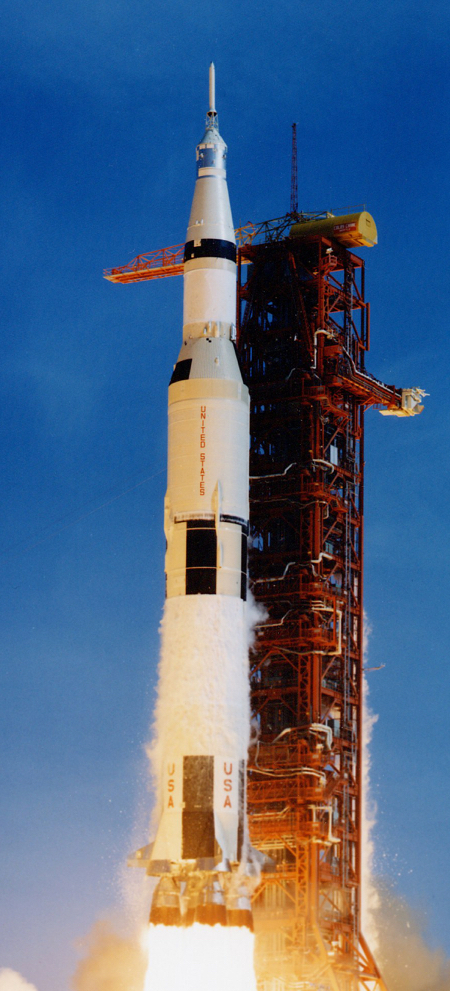Saturn V Rocket

Huntsville, Alabama, is home to NASA's Marshall Space Flight Center, the University of Alabama in Huntsville, and the team responsible for Fermi's Gamma-ray Burst Monitor (GBM) instrument. The mighty Saturn V rocket, which enabled NASA's Apollo flights to the moon, symbolizes Huntsville and the contributions of Marshall and the GBM team to the success of the Fermi mission.
The GBM is composed of 14 detectors located on two sides of the Fermi spacecraft. These detectors let the GBM observe the entire sky not blocked by Earth as well as Earth itself. Twelve of the detectors localize and characterize high-energy X-ray and low-energy gamma-ray emission from a variety of short-lived sources, including gamma-ray bursts, solar flares, magnetar outbursts and even gamma-ray flashes from thunderstorms on Earth.
The other two detectors are sensitive to medium-energy gamma rays and help bridge Fermi's energy coverage with the Large Area Telescope (LAT), Fermi's primary instrument. Both types of GBM detectors are made up of dense crystals — sodium iodide or bismuth germanate — which absorb gamma rays and then emit visible light detected by sensors beneath the crystals. The low-energy GBM detectors are all angled in slightly different directions, and the slightly different intensities seen in each one allows them to determine where in the sky the gamma rays originated.
When the GBM detects new gamma-ray outbursts, it automatically alerts scientists on Earth, who can request ground-based telescopes to conduct follow-up observations. About once a month, the GBM will detect a really bright burst that might be a good candidate for detection at much higher energies by the LAT. In those cases, the GBM will direct the whole Fermi spacecraft to temporarily interrupt its all-sky survey and focus on the burst for the next 2.5 hours.